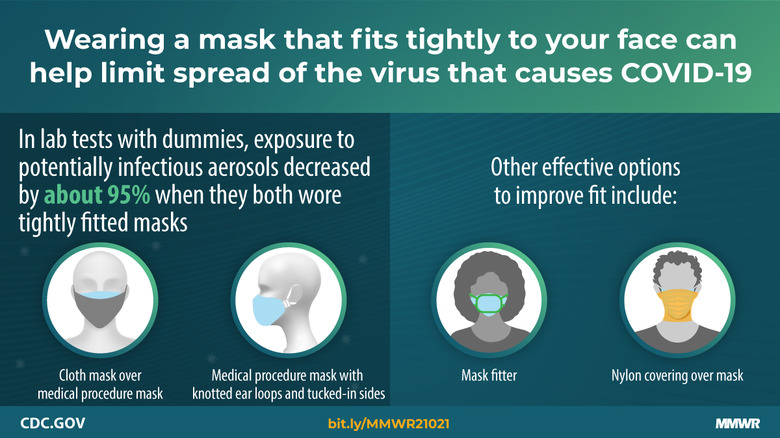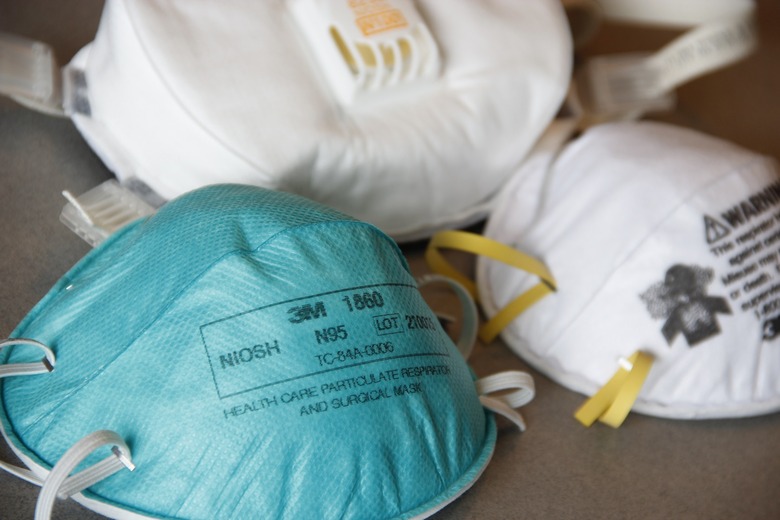CDC Double-Masking Study Shows Startling Impact Of COVID-19 Protection
A new mask study by the US CDC has updated guidance for those considering double-masking or whether they should be buying N95 face protection, as preventing COVID-19 spread through infections aerosols remains a key strategy to handling the ongoing pandemic. Masks are now not only encouraged by public health authorities but in fact required in some situations; however, evolving science and a lack of standards have contributed to confusion as to what people should be wearing, and when.
Most recently, that's centered on the possibility of double-masking: that is, wearing two masks, layers one on top of the other. It's an approach that hasn't been officially recommended so far by the US Centers for Disease Control and Prevention, though key personnel such as Dr. Anthony Fauci have endorsed the practice.
Now, in a new study organized and published by the CDC, some of the challenges and requirements of masking have been put to the test. In particular, the experiments looked at how more commonly-available options – such as cloth masks and medical procedure masks – could be improved upon, helping bring their effectiveness closer to that of N95 masks and similar.
The N95 mask standard effectively requires such-rated facewear to deliver at least 95-percent filtration of 0.3 micron particles. Similar standards, such as KN95, also demand that degree of filtering. Bottlenecks in production, however, led to recommendations that, for the general public at least, alternative face coverings should be used.
The key there, the new study discovered, is fit. "CDC conducted experiments to assess two ways of improving the fit of medical procedure masks: fitting a cloth mask over a medical procedure mask, and knotting the ear loops of a medical procedure mask and then tucking in and flattening the extra material close to the face," the study, in early release today, summarized. "Each modification substantially improved source control and reduced wearer exposure."
Using lab tests with dummies, the CDC tried out both cloth masks worn over medical procedure masks, and medical procedure masks with knotted ear loops and tucked-in sides. Both approaches effectively improved the seal around the wearer's face. Exposure to potentially infection aerosols decreased, the CDC says, by around 95-percent for the tightly-fitted masks.

It's a considerable improvement, too. In one experiment, an unknotted medical procedure mask, worn on its own, was shown to block 42-percent of the particles from a simulated cough. A cloth mask worn alone was slightly better, at 44.3-percent effective.
However, when the cloth masks was combined with the medical procedure mask, the former atop the latter, this double masking blocked 92.5-percent of the cough particles.
Other options which showed improvements in fit included a so-called mask fitter, which helps shape the mask to the contours of the face, and a nylon covering stretched over the top of a mask. Both do pretty much the same thing: minimize the gaps by which aerosols can enter and exit.
Mask performance – and how that's communicated to the public – has come under increasing attention during the pandemic. Shortages of N95 rated face coverings led to a huge increase in alternative masks, ranging from homemade fabric coverings through to more complex arrangements. However with little in the way to validate either their performance or safety, that's left consumers to effectively fend for themselves when making a cost-effective selection.

The answer could, in part at least, hinge on a newly proposed mask standard. Put forward earlier this month by the technical standards organization ASTM International along with the National Personal Protective Technology Laboratory, the new classifications would effectively sit underneath N95 as it currently exists, thus offering less security for filtration but with the promise of easier manufacturing and thus greater availability and affordability.
Two such standards have been proposed, differing in the degree of blockage for 0.3 micron particles they offer. Level 1 would require 20-percent filtration, but promise more breathability while wearing the mask. Level 2, meanwhile, would demand at least 50-percent filtration from the masks, but they would be a little harder to breathe through.
Even with double-masking, though, the CDC warns that it's not completely straightforward. For a start, the new study was completed using a single type of medical procedure mask and a single type of cloth mask; other types, brands, and styles might vary in their performance. The researchers also didn't explore other combinations, like cloth over cloth or medical procedure mask over cloth.
Facial shapes, sizes, and hair might impact fit too: those with a beard, for example, may struggle, while children and those with smaller faces could also experience extra challenges. Finally, there's the possibility that adjustments made to ensure tighter fit could also "impede breathing or obstruct peripheral vision for some wearers," the study allows, or adjust the shape of the mask so that it no longer covers both nose and mouth.
